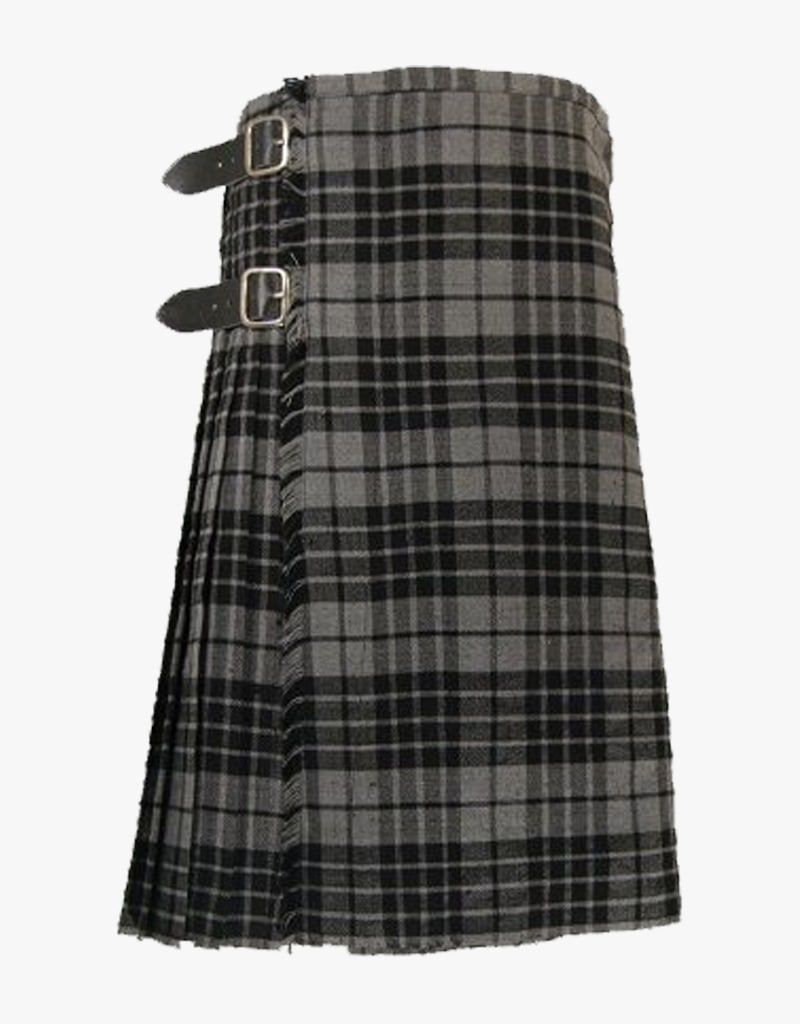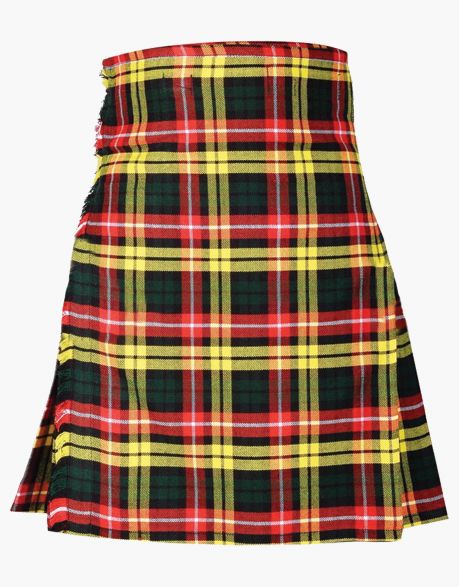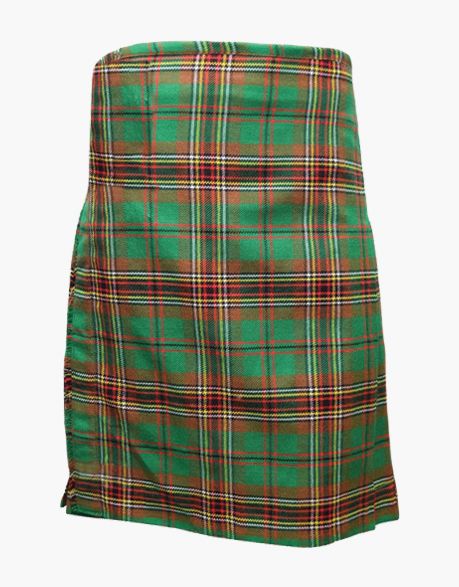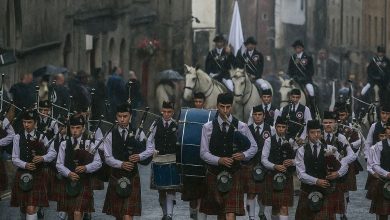Traditional Tartan Kilt vs. Great Kilt: A Clash of Highland Heritage
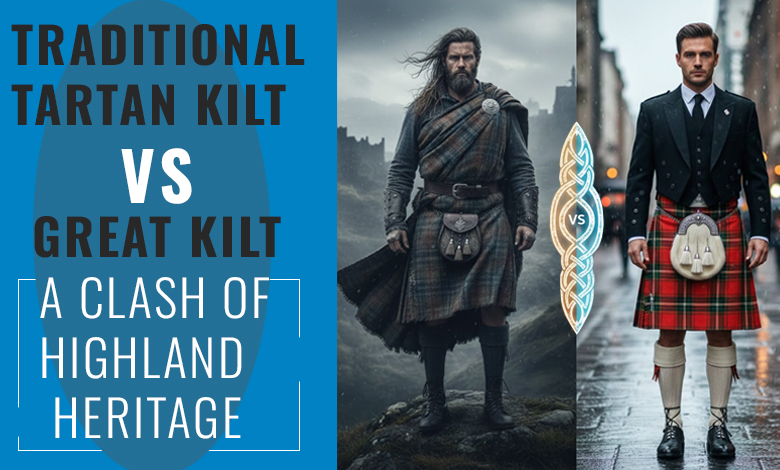
Have you ever thought about the change in structure of kilts with time? Do today’s kilts resemble the one that was worn first, or have they changed apparently? Yes, they have transformed significantly. The traditional kilts we know as simple tartan kilts were the Great kilts before adopting this identity. Traditional kilts are popular now but the Great Kilts are difficult to spot. Why is it so and what sets them apart from each other? This discussion is meant to solve this mystery and familiarize you with their dissimilarities.
Table of Contents
ToggleUnderstanding Both Kilts

Before we deeply seek their differences, let us help you understand these both kilt variants first.
Great Kilt: Whenever you hear the term “great kilt,” unintentionally interpret it as the very first form of Scottish kilts. It is a long piece of fabric that is wrapped around the lower part of the body and draped over the shoulder. A belt fastens it on the waist area, and a brooch prevents it from falling.
Traditional Tartan Kilts: Let’s discuss traditional tartan kilts now that are modified forms of great kilts. They cover the lower part of the body only because their size decreased. Shirts are worn with them to cover the upper part. The pleats moved to the back in today’s kilts from the sides, while the open design is restricted to a specific level.
Traditional Tartan Kilt vs. Great Kilt
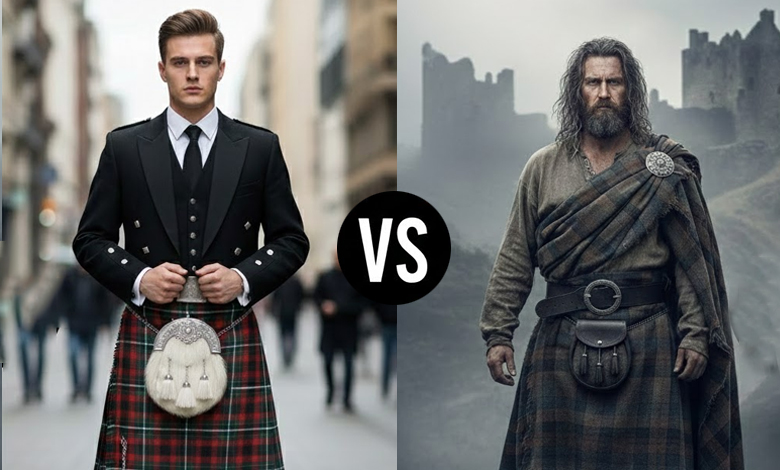
Regarding the in-depth comparison of traditional kilts and great kilts, they mismatch each other in several ways, from their background to the style and usage in this modern era. So, let’s highlight their detailed differences.
Historical Background
The Great Kilt (Feileadh Mòr): The origin of the great kilt dates back to the 16th century. The overall silhouette of the clothing did not change for a couple of centuries. Thus, some minor modifications were made with time.
The Traditional Tartan Kilt: Traditional tartan kilts, on the other hand, embraced this certain shape in the early 18th century. Therefore, the fame they enjoy today is the aftermath of the ban imposed on Scottish culture after the Jacobite Rebellion.
Construction & Design
Great Kilt: The construction and design of these kilts is also different. The construction of the great kilts does not involve any special technique. It is a significant piece of fabric which is 4-5 yards long with double-width fabric.
Traditional Tartan Kilt: Traditional kilts are pretty different in this scenario, as expert craftsmanship is the basic requirement to sew them. They look like skirts, and their construction involves some other materials such as leather straps and belt loops.
Wearing & Functionality
Great Kilt: Wearing a great kilt is a technical process and needs expertise, as it does not have a design. To wear it, spread it on the flat surface and position the center to make an apron. Align the dominant stripe and wrap it around your body. Gather the excessive fabric at the right side.
The left side should then hang down to around knee level as you move it across your body to the right. Secure the entire kilt with a belt or tie the ends together after gathering the pleats at the back and bring them up. From the functionality perspective, they also do not have pockets or anything else to keep goods. Therefore, the open structure makes them pretty functional from a movement perspective.
Traditional Tartan Kilt: Wearing a traditional tartan kilt is pretty easy compared to the great kilt. Start with dressing it up to the natural waistline below the belly button. The pleats should sit on the backside while the fall drops to the middle of the kneecap. This variant also lacks pockets, but the pleats and comfort of tartan result in a good level of practicality.
Style & Modern Usage
Great Kilt: Though great kilts are one of the most conventional forms of kilts, they have nothing to do with styling perspective. Their use, in fact, is very limited now, and people wear them occasionally (on strict formal events) for extreme traditional looks.
Traditional Tartan Kilt: Tartan kilts are versatile and suitable for a number of events with several themes. Their use has become popular in streetwear as well. Above all, they can be styled in many ways for modern looks.
Comparison Table
| Aspects | Great Kilt | Tartan Kilt |
| Historical Background | Originated in the 16th century | Evolved in the 18th century, post-Jacobite Rebellion |
| Construction | Made from 4–5 yards of untailored fabric, manually wrapped | Made with tailored craftsmanship, sewn pleats |
| Fabric Width | Usually double-width cloth | Usually single-width, tailored with precision |
| Wearing Process | Requires laying flat, wrapping, and belting in place | Worn like a skirt, belted at the waist |
| Appearance | Draped and flowing, rugged aesthetic | Fitted and polished look |
| Functionality | No built-in features; allows freedom of movement | No pockets, but comfortable & practical |
| Modern Use | Rare, mostly in historical reenactments or formal events | Popular in ceremonial, casual, and streetwear |
| Style Flexibility | Limited styling options | Versatile for various styles |
Visit The Utility Kilt to Buy Scottish kilts
After having a detailed comparison of two traditional entities, you must have planned something exciting? So, which one of them are you going to buy next? We suggest you try the great kilt once if you have decided on any modern clothing. No matter what you want, whether one from different men’s kilts or an extremely ancient kilt, The Utility Kilt has everything for you. If you do not find your required kilt or pattern at our store, just inform the team; our experts will manage everything. Some unique tartan kilts available at our store are given below:
FAQs about Both Kilts Discussed Above
Can women wear Great Kilts?
No, ladies are not allowed to wear Great Kilts since they were exclusively for males. Women have been wearing tartan kilts since the 18th century.
Is it accurate to wear a Great Kilt with modern accessories like a sporran or ghillie brogues?
Though sporrans were not invented during the peak era of the great kilt, people today pair them both, as both of them are traditional entities. Regarding the Ghillie brogues, yes, they are traditionally worn with great kilts and are appropriate today as well.
Are kilts ever worn as daily attire in modern Scotland?
Yes, modern kilts are everyday wear in modern Scotland, but the ones discussed above are restricted to formal or semi-formal occasions.
How do I care for and store a Great Kilt compared to a Traditional Kilt?
The caring and storing process of a great kilt is the same as that of tartan kilts, following these simple steps:
- Cleaning before and after every use.
- Air drying when you put it off.
- Occasionally washing with cold water and mild detergent.
- Proper storing in breathable space.
Are Great Kilts more expensive than Traditional Kilts?
No, The Great Kilts are generally less expensive than their modern form, as you have to pay for the extra fabric only. In fact, it saves you the labor cost.

